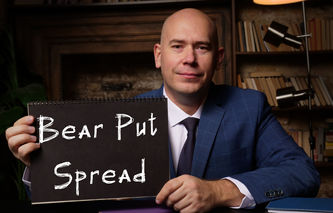Definition
The term index LEAPS call refers to the investment strategy involving the buying of a Long Term Equity AnticiPation Security when the stock market is thought to increase in value. Index LEAPS calls differ from standard options only in terms of their expiration, which can be up to three years in the future.
Explanation
Index LEAPS provide investors with the opportunity to take a long-term position in the stock market without investing in an index. They can also provide a hedge against a decline in the overall value of the stock market if the investor would like to protect their portfolio of securities. If an investor anticipates an advance in the stock market over a long-term timeframe, they have the option of purchasing an index LEAPS, specifically a call. If the investor anticipates a decline in the overall value of the stock market, and they own common stock, they can hedge their loss by buying an index LEAPS put. In this manner, LEAPS can be used to lower an investor's loss of capital risk.
Example
An investor believes technology stocks will increase significantly in value over the next three years. The investor would like to participate in this increase, but does not wish to hold these stocks in her portfolio. The NASDAQ 100 index is currently trading at $5,000, and a three years index LEAPS call with a strike price of $4,950 is selling for $60.00. The investor decides to purchase three of these calls for a total of 3 (calls) x $60.00 (price) x 100 (multiplier), or $18,000. The index LEAPS call provides the investor with the right to buy 300 shares of the NASDAQ 100 index regardless of how high the NASDAQ 100 increases. The breakeven point for this investment is calculated as:
= Strike Price of the Option + Premium Paid on the Option= $4,950 + $60.00, or $5,010
If the NASDAQ 100 rises above $5,010, the investor has the option of cashing out their position and selling their in-the-money index LEAPS. If the price of Company ABC's stock falls below the call's strike price of $4,950 at expiration, the investor loses the price paid for the three calls, or $18,000. With a call option, the investor's upside potential is theoretically unlimited. For example, if the NASDAQ 100 were to rise to $5,300 over the next three years, the profit on the index LEAPS calls would be:
= Value of LEAPS Call - Premium Paid for the Option
Where the value of the LEAPS call would be:
= (Price of NASDAQ 100 - Strike Price on LEAPS Call) x Multiplier x Number of Calls= ($5,300 - $4,950) x 100 x 3, or= $250 x 100 x 3, or $75,000
The investor's profit would then be:= $75,000 - $18,000, or $57,000



.png)
